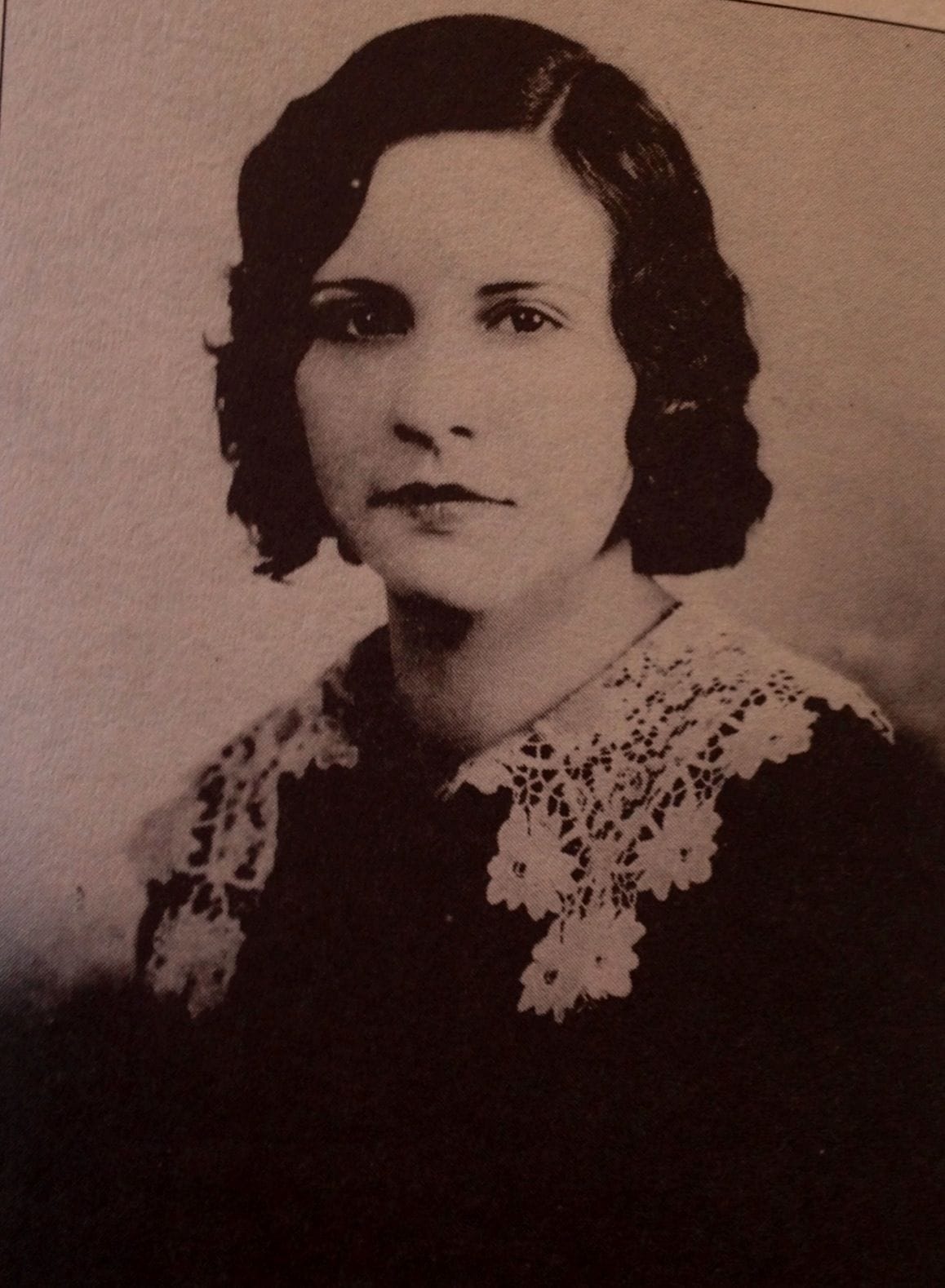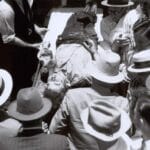You’ve heard of John Dillinger, the notorious gangster of the 1930s. But have you heard of Billie Frechette, the woman who stole his heart? Beyond their infamous affair, Billie’s life was anything but ordinary. From her Native American heritage to her struggles and triumphs, this article unravels the real story of Billie Frechette— the woman who was much more than just “Dillinger’s girl.”
Billie Frechette: A Life Beyond the Headlines
Born Mary Evelyn Frechette on a Menominee Indian Reservation in Wisconsin, Billie’s life was deeply intertwined with her heritage. This background significantly shaped her journey, especially during an era rife with prejudice and stereotypes.
Imagine this: It’s 1933, the Great Depression is in full swing, and Billie meets John Dillinger. Their passionate but short-lived relationship was like a firework—bright, intense, and fleeting. However, Billie remained fiercely loyal to Dillinger, even as his crimes grabbed headlines. This unwavering devotion, even in the face of his notoriety, suggests a woman of remarkable strength and loyalty, a side often obscured by Dillinger’s infamy.
After serving time for harboring Dillinger—a testament to her loyalty—Billie could have retreated from the public eye. Instead, she embraced it. Joining the Dillinger family’s traveling show, she boldly shared her side of the story, capitalizing on the public’s fascination with the infamous gangster. This chapter reveals a woman determined to control her narrative and challenge the label of “gangster’s moll.”
The Untold Story: Unveiling the Real Billie Frechette
To call Billie Frechette merely a “gangster’s moll” is a gross oversimplification. She was a complex individual with dreams, aspirations, and a life that extended far beyond Dillinger. Proud of her Native American heritage, she carved her own path despite the societal constraints of her time.
After the “Crime Doesn’t Pay” tour concluded, Billie returned to her roots on the Menominee Reservation. What happened next remains a mystery. Did she find peace? Did she build a new life? These unanswered questions make her story even more intriguing.
Navigating a Complex World: A Glimpse into 1930s America
It’s crucial to understand the world Billie navigated. The 1930s in America was a period marked by economic hardship, deeply ingrained racial prejudices, and social upheaval. As a Native American woman, Billie’s experiences offer a unique lens through which to examine the complexities and injustices faced by marginalized communities during that era.
The Enduring Legacy of Billie Frechette
Even today, Billie Frechette’s story resonates. She defies stereotypes, reminding us that people are more than just labels. Her strength and resilience in the face of adversity serve as a powerful reminder that we all have the potential to overcome challenges and define our own paths.
By exploring Billie’s story, we gain a better understanding of our society’s ongoing struggle for equality and justice. She reminds us that behind every headline, every infamous tale, there are real people with real stories. Billie Frechette, the woman behind the “gangster’s moll” label, challenges us to look beyond the surface and acknowledge the multifaceted nature of human experience.
What Happened to Billie Frechette?
After her time with the traveling show, Billie Frechette returned to her roots on the Menominee Reservation in Wisconsin. The details of her later life remain somewhat of a mystery. Some believe she sought a quiet life away from the spotlight that had followed her for years.
However, life for a Native American woman in the 1930s presented unique challenges. Prejudice and discrimination were widespread, and opportunities were likely limited. This context prompts questions about the difficulties Billie may have encountered upon her return to the reservation. Did she find the peace and acceptance she sought, or did the shadow of her past continue to linger?
While we may never know all the details of Billie Frechette’s later years, her story encourages us to consider the world she inhabited. She was more than just John Dillinger’s girlfriend; she was a woman navigating a complex and often unjust society. Her experiences, both as a Menominee woman and through her association with Dillinger, offer a unique window into a turbulent period in American history.
Did Billie Frechette Have Kids?
Before her life intersected with John Dillinger’s, Billie Frechette experienced both the joys and heartbreaks of motherhood. She gave birth to her son, William Edward Frechette, in April of 1928. Tragically, her little boy passed away just three months later.
This profound loss adds another layer to Billie’s already complex story. While she’s often remembered for her connection to Dillinger, her personal experiences, including motherhood and loss, paint a more complete and nuanced picture of her life.
How Old Was Billie Frechette When She Died?
Billie Frechette, known for her relationship with John Dillinger, lived a full life before her death in 1969 at the age of 61. While her time with Dillinger was relatively brief, its impact on her life was undeniable.
Many people were unaware that Billie was more than just Dillinger’s girlfriend. She was a woman with her own unique and complex story, shaped by her heritage, her experiences, and her choices.
Even after Dillinger’s death, Billie remained devoted to him. However, she also carved her own path. Rather than fading into obscurity, she chose to share her experiences with the world. Billie capitalized on her notoriety, selling her story and even participating in a “Crime Doesn’t Pay” touring show, where she cautioned audiences about the perils of a life of crime.
Life presented Billie with numerous challenges, including the devastating loss of her child and imprisonment. Yet, despite facing prejudice and personal tragedies, she displayed remarkable resilience. Billie eventually returned to her roots on the Menominee Indian Reservation, where she may have found solace and peace in her later years.
Who Is Billie in Public Enemy?
In the context of John Dillinger’s story and the public’s fascination with him, Billie Frechette is often relegated to the sidelines. However, it’s essential to remember that she was not simply a background character in Dillinger’s narrative. Billie had her own dreams, her struggles, and a life that extended far beyond her relationship with the infamous gangster.
Born Evelyn on the Menominee Indian Reservation in Wisconsin in 1907, Billie’s Native American heritage significantly influenced her upbringing. However, like many young people of that era, she was drawn to the allure of big-city life and eventually found herself in Chicago.
Chicago in the 1930s was a city teeming with activity, both good and bad. It was in this environment that Billie encountered the world of petty criminals and, ultimately, crossed paths with John Dillinger. Their connection, though intense and passionate, was short-lived. Nevertheless, it thrust her into the public eye and forever linked her name to the notorious “Public Enemy.”
The consequences of being associated with someone like Dillinger were significant. After his death, Billie faced jail time for aiding him while he was on the run from the law. Despite this hardship, prison didn’t break her spirit. Upon her release, she made a conscious decision to reshape her life. Teaming up with Dillinger’s family, she became part of a “Crime Doesn’t Pay” show, using her own experiences to warn others about the dangers of a life entangled with crime.
Eventually, Billie sought peace and returned to her roots on the Menominee Reservation. There, she remarried and attempted to build a new life for herself. However, the shadow of her past, particularly her association with Dillinger, proved difficult to escape.
Billie Frechette’s story reminds us that people are complex and multifaceted. She was more than just “Dillinger’s girlfriend,” a label that fails to capture the fullness of her life. She experienced love, loss, and ultimately sought redemption. While she attempted to move on, her life remained intertwined with the legend of John Dillinger, illustrating the lasting impact our choices can have, both on ourselves and those around us.
Explore Further: Captivating Stories from History
Investigate the fascinating story of a visionary author by plunging into Behold a Pale Horse by William Cooper. Be captivated by the tale of Barbara Daly Baekeland, a socialite whose life took a tragic turn. Explore the enigmatic world of Baroness Blixen, a renowned author who captured the essence of Africa in her writings. Delve into the incredible life of Berniece Baker Miracle, a woman who claimed to have cured cancer with an extraordinary method. Discover the captivating story of Beverly Hemings, a slave who bore children to former U.S. President Thomas Jefferson. Read about the legendary Big Nose Kate, a fearless frontier woman who left an enduring mark on the Wild West. Uncover the thrilling adventures of Black Sam Bellamy and Black Sam Pirate, notorious pirates who roamed the high seas. Learn about Blanche Barrow, a complex and enigmatic woman who played a pivotal role in the infamous Bonnie and Clyde gang. Embark on a captivating journey into the life of Bonnie Parker, the notorious outlaw who captured the imagination of a nation.
- China II Review: Delicious Food & Speedy Service - April 17, 2025
- Understand Virginia’s Flag: History & Debate - April 17, 2025
- Explore Long Island’s Map: Unique Regions & Insights - April 17, 2025
















